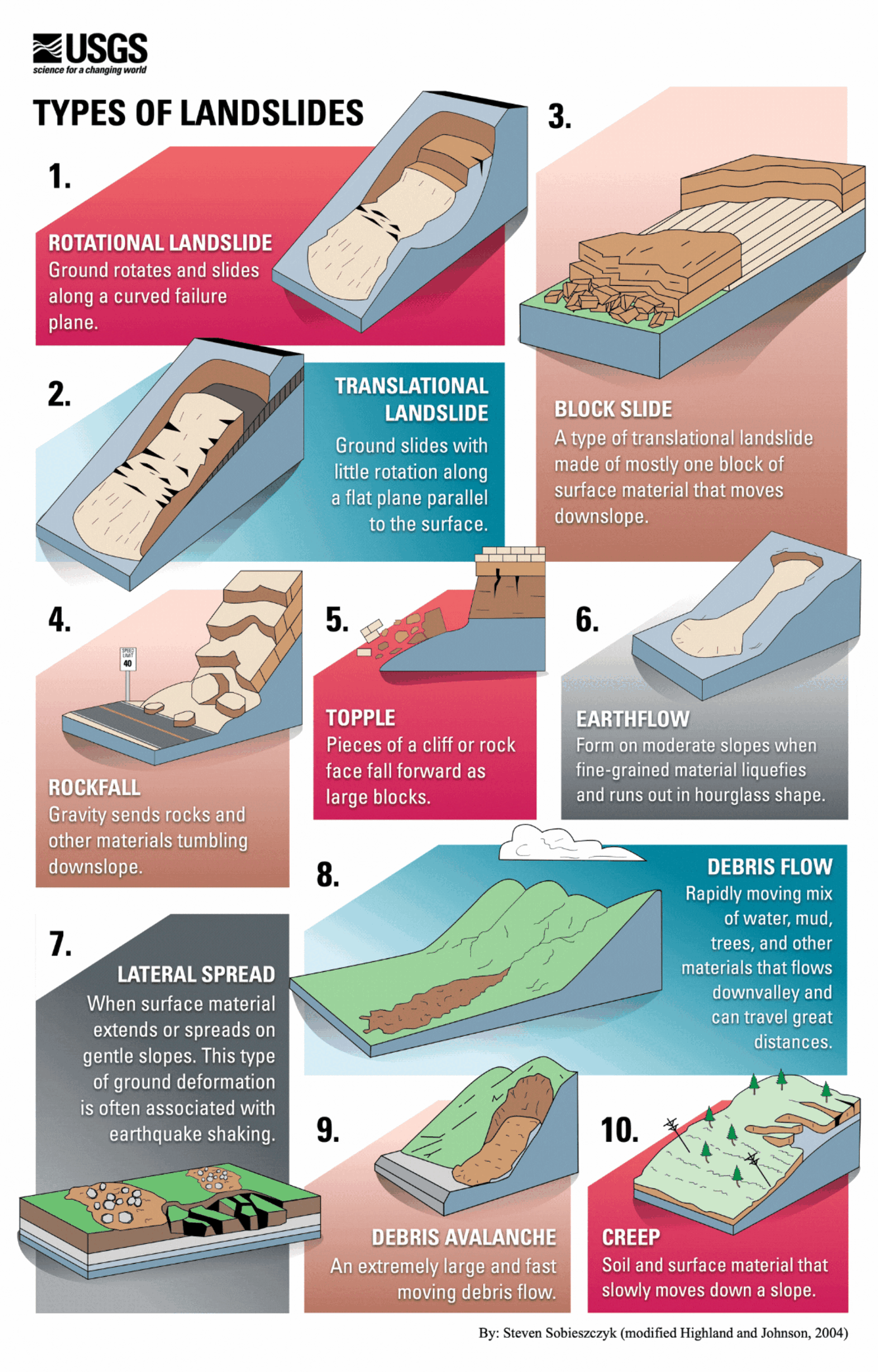A landslide is the movement of a mass of rock, debris or earth down a slope. Landslides come in a wide variety of forms, from slope failures such as rock falls and debris avalanches, to shallow slides and flows of debris. Their size can vary from a single boulder in a rockfall to tens of millions of cubic metres of material in a debris avalanche or large landslide. Landslides do not include ground subsidence or erosion.

The Otago Natural Hazards Database shows you the landslides we know about and have mapped – it does not show the susceptibility of areas that may be prone to future landslides (due to slope, rock type or other characteristics of the land).
A rotational slide is where the rock mass slips down on a curved or spoon shaped surface, often causing the upper surface of the displaced material to rotate backwards.
A translational slide is where a mass of rock material moves downslope along a distinctive plane of weakness such as a fault, a joint or bedding plane.
A block slide is a type of translational slide where a mass of rock material moves downslope as a single, coherent unit or units.
Fall type landslides involve the collapse of rock materials from steep slopes or cliffs, often traveling downslope as boulders by freefall, rolling and/or bouncing.
Toppling failure involves the forward rotation of a rock or earth mass out of a slope.
Flow type landslides involve the movement of material downslope in the form of a fluid. Examples of these type of landslides include rock avalanches, mud and debris flows.

Fault: A fracture between two blocks of rock that have moved relative to each other in the past.
Joint: A regular group of extension fractures in a rock mass that have experienced little or no movement.
Bedding plane: the surface that separates two layers of sedimentary rock layed down at different times.
For more information about landslides in Otago, please go to the Landslides tab in the Otago Natural Hazards Database Portal, or visit our technical reports section.

Otago Natural Hazards Database
Our hazards database is intended to improve public access to hazard information and to help the public, local authorities, and others make informed decisions about their exposure to natural hazards.

Pūroko me kā Tuhika Reports and publications - natural hazards
A natural hazard is a situation where a natural event has the potential to cause harm or loss. Informed by science, ORC shares our research into managing natural hazards in Otago.


